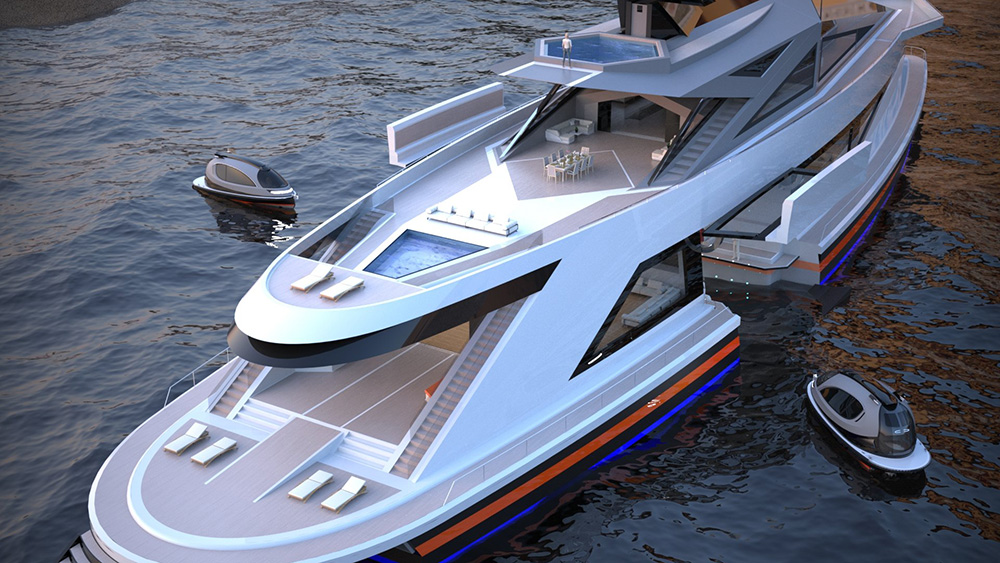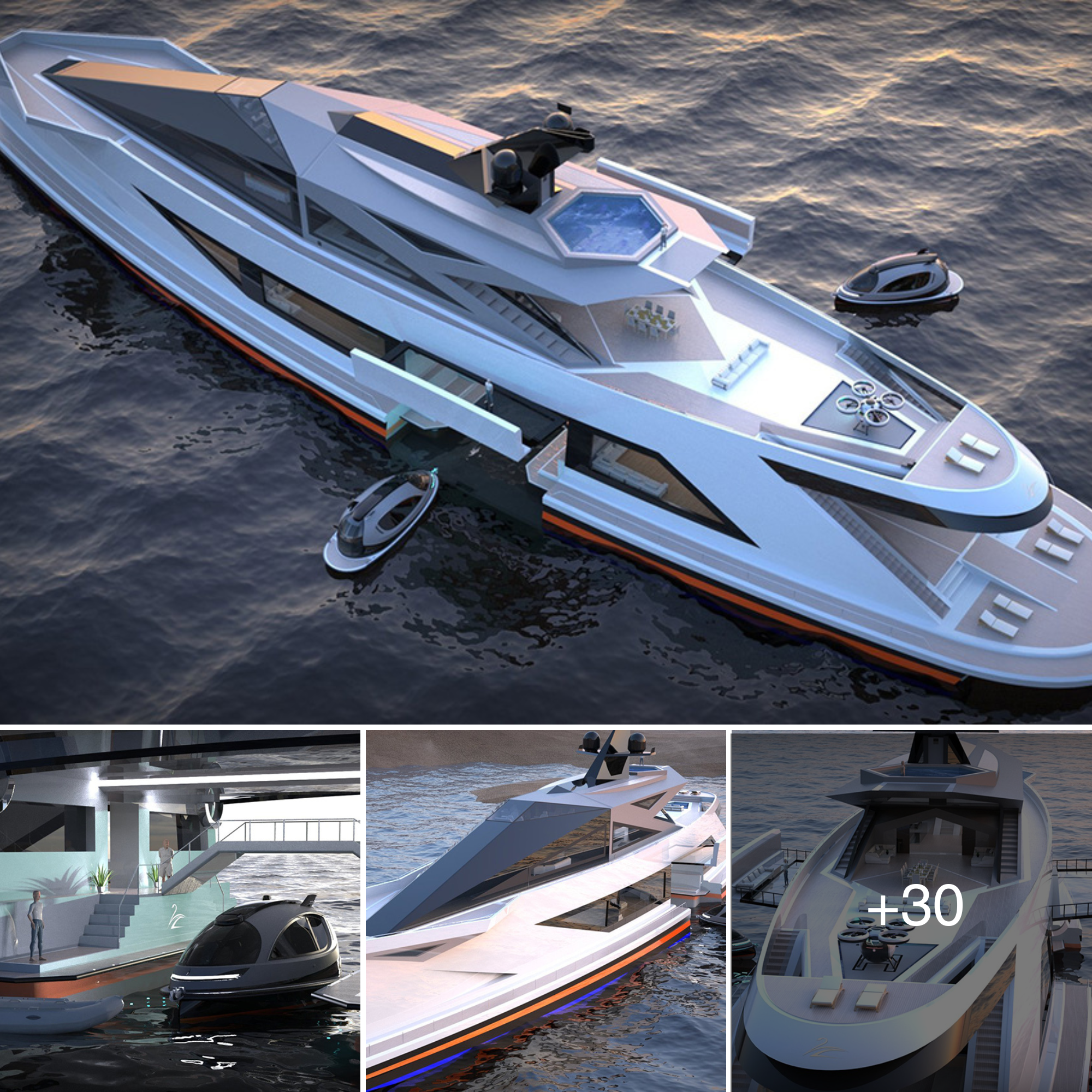
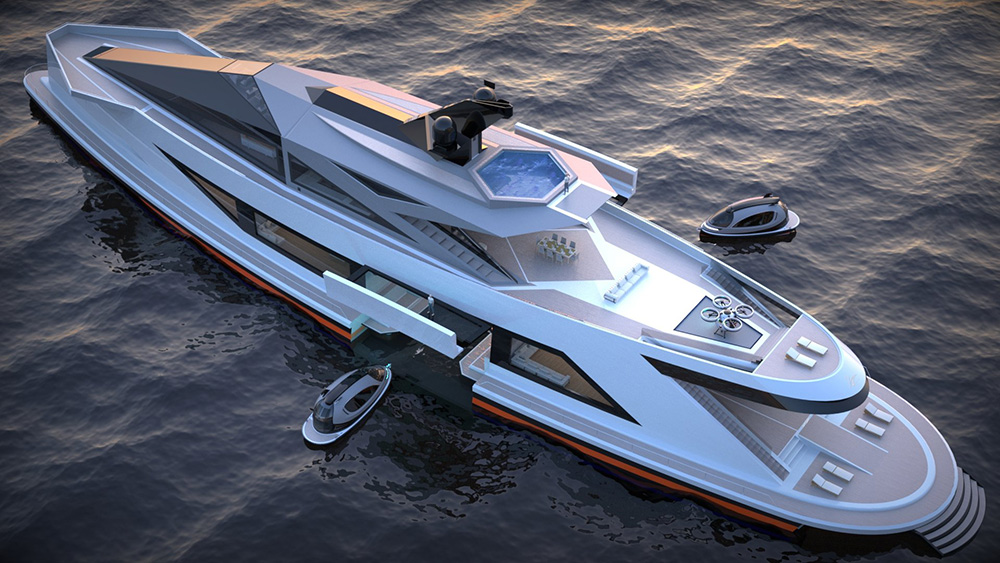
Who says a port must be located on land? Certainly not Lazzarini. This is due to the fact that the design studio’s most recent innovative concept is a superyacht that functions as a dockyard for small tenders serving the high seas.
The futuristic Saturnia is 328 feet long and has a geometric silhouette with pointed, angular lines. The ship will be made exclusively of dry carbon fiber, which, according to Lazzarini, will make it approximately 50 percent lighter than ships of comparable size.
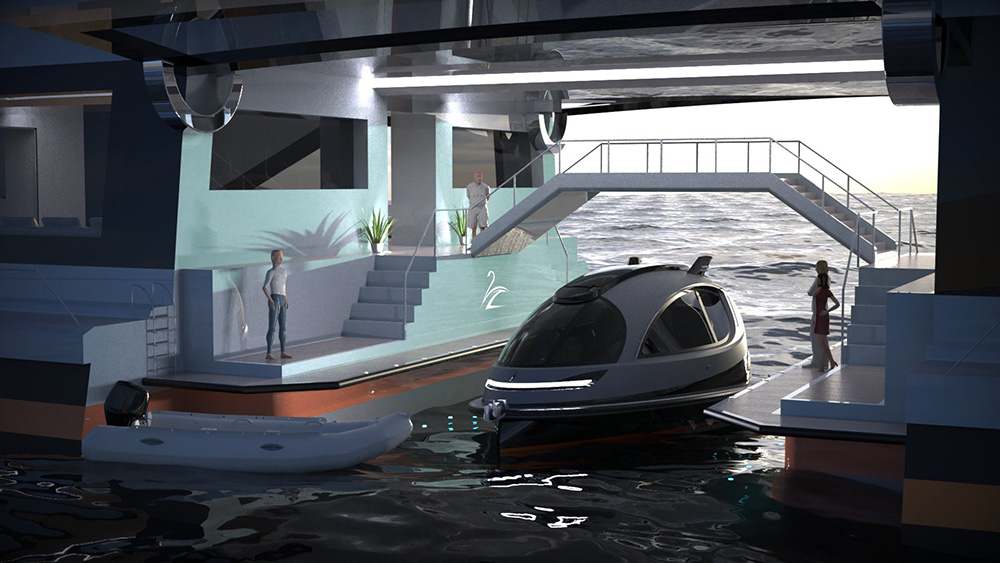
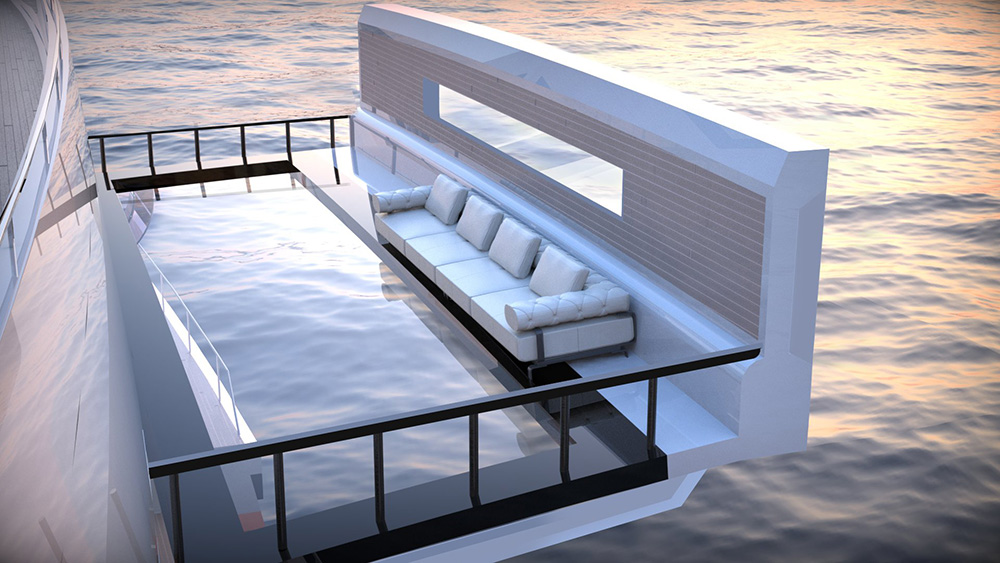
Of course, the private port located midship is the crowning achievement. This one-of-a-kind sheltered area is accessible through two large apertures on each side that automatically raise when needed. Similar to a standard wharf, it can facilitate the entry and exit of mariners while also accommodating vessels with a draft of up to 5 feet. Consider it the entrance to your very own floating hotel.
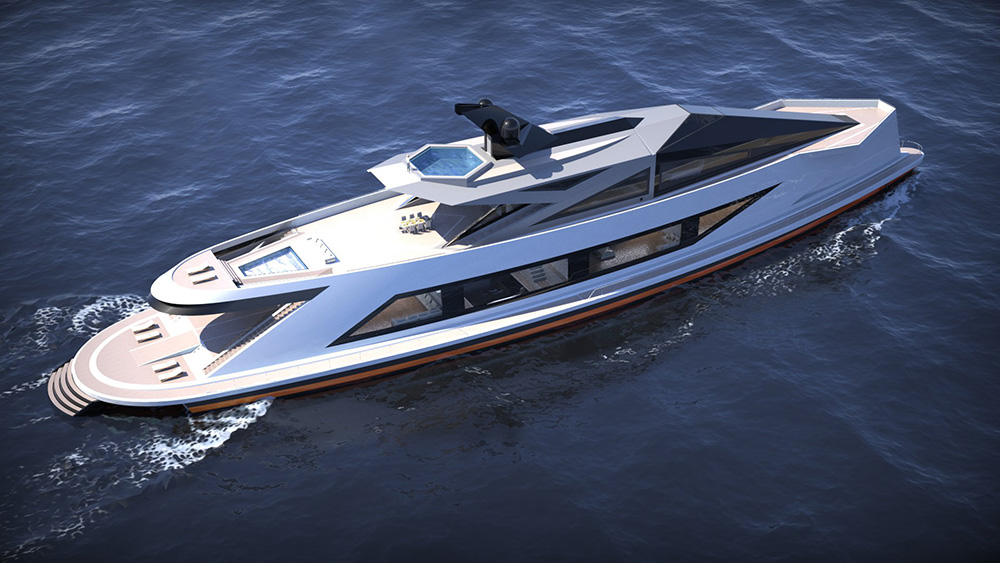
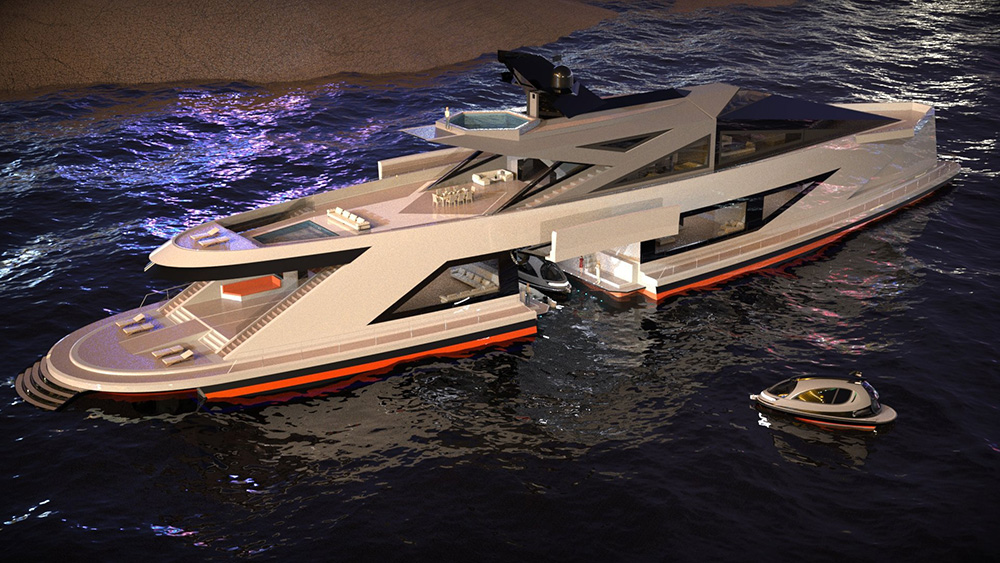
The interior comprises five floors plus an antenna/radar area on the roof. It is characterized by high ceilings and enormous windows that maximize the view of the ocean. It can accommodate between 10 and 20 guest suites and dormitories for 20 crew members, with a layout that can be tailored to each owner’s preferences.
As you might anticipate, Saturnia comes with a plethora of luxury amenities, such as multiple pools and alfresco dining areas, a launchpad for eVTOLs (it is 2021, after all), and a stunning glass-bottom lounge with breathtaking views of the world beneath the waves.
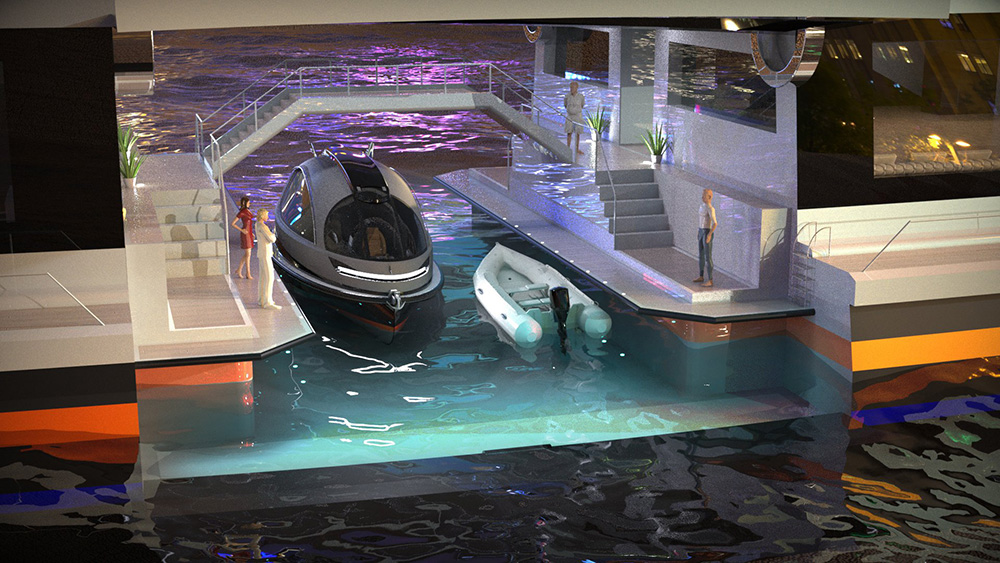

Regarding Saturnia’s propulsion, Lazzarini envisions hybrid propulsion. Dual diesel engines and a central electronic water jet system would provide the vessel with a maximum speed of 30 knots and less pollution.
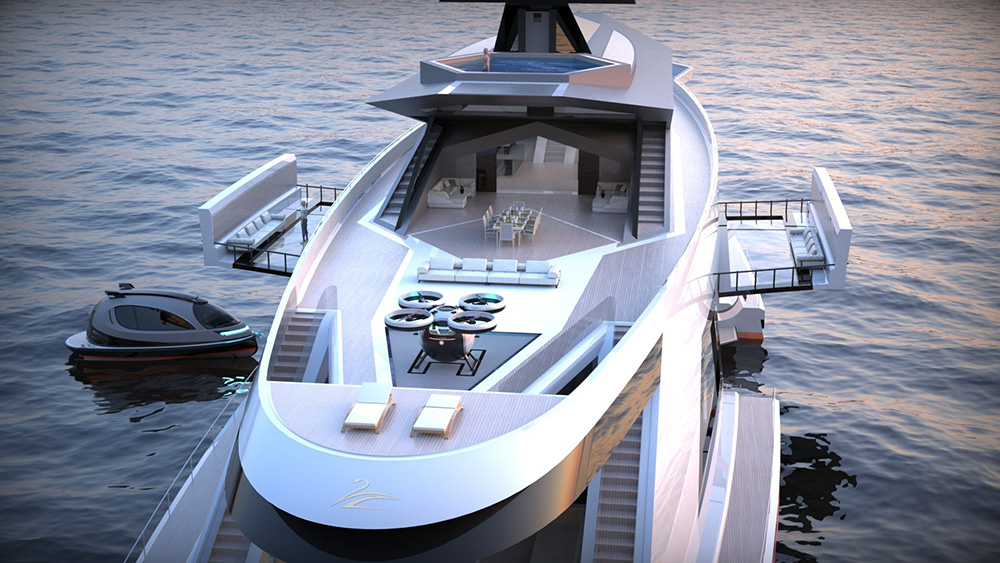
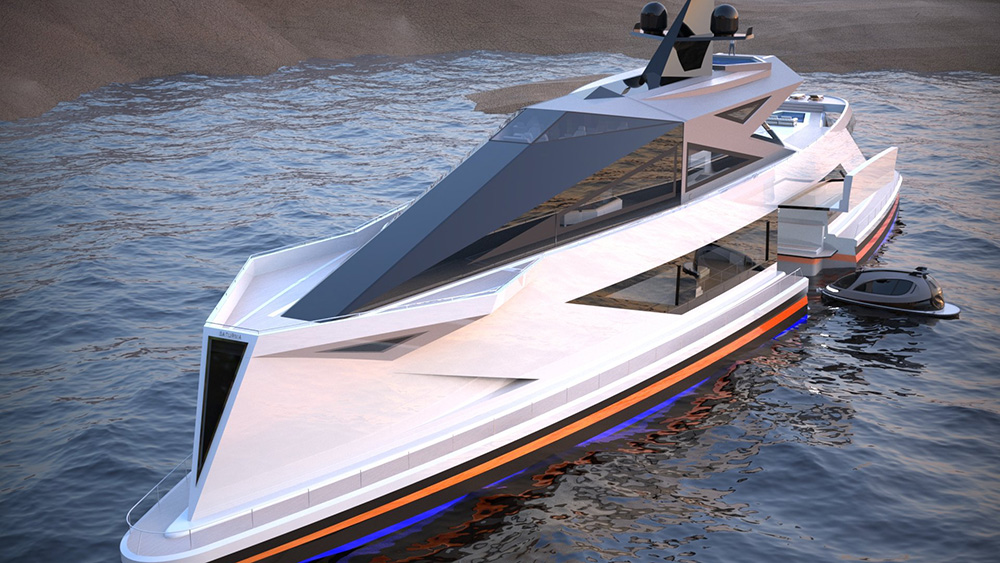
Believe it or not, this is a relatively subdued Lazzarini design. The innovative studio has previously designed megayachts in the form of sharks and swans, as well as a hyperyacht that resembles a projectile. Clearly, all of this design innovation comes at a cost. Saturnia is still prohibitively expensive. The superyacht, according to Lazzarini, can be commissioned for $300 million and will take approximately two and a half years to reach the seas. Best to begin saving immediately.
